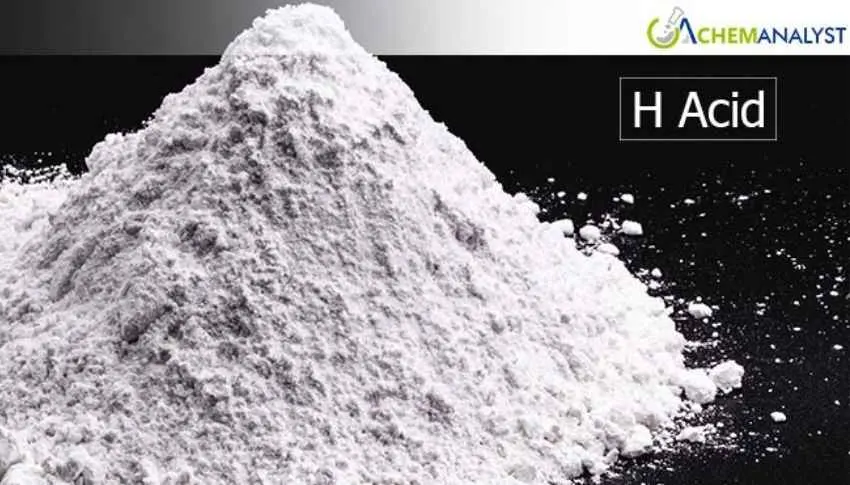Welcome To ChemAnalyst

In July 2025, U.S. H-Acid prices dropped by 1.3%, with a further decline anticipated in August. This downturn was driven by a combination of weak demand and favorable import conditions from China. The downstream textile and polyester industries were in an off-season slump, compounded by high inventories of finished goods, which eliminated the need for new raw material purchases. This lack of demand, coupled with a significant drop in freight rates from China, made imports cheaper and drove down market prices. Although a major Chinese plant shutdown and logistical issues in the exporting country restricted supply, these factors were not strong enough to counteract the dominant effect of sluggish demand, tariff uncertainty, and the onset of hurricane season.
In July 2025, U.S. H-Acid prices dropped by 1.3%, with a further decline anticipated in August. This downturn was driven by a combination of weak demand and favorable import conditions from China. The downstream textile and polyester industries were in an off-season slump, compounded by high inventories of finished goods, which eliminated the need for new raw material purchases. This lack of demand, coupled with a significant drop in freight rates from China, made imports cheaper and drove down market prices. Although a major Chinese plant shutdown and logistical issues in the exporting country restricted supply, these factors were not strong enough to counteract the dominant effect of sluggish demand, tariff uncertainty, and the onset of hurricane season.
U.S. H-Acid Prices Plunge in July 2025 Amid Cheaper Chinese Imports, Forecast to Drop Further in August
In July 2025, the U.S. H-Acid market saw a sharp downturn, with CFR-Texas prices dropping 1.3%. A number of convergent factors led directly to this negative trend, indicating a market where supply-side limitations were overshadowed by advantageous import circumstances and poor demand. The price movement served as a clear indicator of the difficult conditions downstream companies face as well as the effects of economic and logistical changes in the global supply chain.
Due to the hurricane season, which may restrict procurement activities, H-Acid prices in the USA are predicted to drop even further in August 2025, according to ChemAnalyst.
The ongoing slow demand from important downstream sectors was one of the main causes of the price decline. The textile and polyester industries, important consumers of H-Acid for making dyes, were in a usual off-season downturn.
This was not your average seasonal slowdown; rather, it was exacerbated by large, completed product stockpiles. Manufacturers no longer needed to buy new raw materials like H-Acid since they were sitting on huge inventories of unsold clothing and textiles.
As a result, the purchasing environment became stagnant, and procurement was either postponed or stopped entirely. The main source of demand for H-Acid in the US market was essentially diminished by the absence of strong orders from these industries.
Even while there were certain elements that could have contributed to a price increase in the past, they weren't enough to offset the effects of low demand and lower-priced imports. The steep fall in freight rates from China was a major contributing reason to the decline in the price of H-Acid.
As H-Acid is predominantly imported from China, the reduction in shipping costs made the product significantly cheaper for U.S. buyers. This lower cost of imports allowed for a reduction in selling prices without a proportional decrease in profit margins for importers, thus driving the market price down.
Furthermore, the uncertainty surrounding U.S. tariff plans had a direct impact on the important dye business. A culture of risk aversion brought forth by lingering tariff worries made companies wary of long-term commitments and fresh investments.
The start of the hurricane season increased this uncertainty by adding logistical risk and dampening the H-Acid purchase process. Due to the possibility of supply chain interruptions, businesses were hesitant to place significant orders; instead, they chose to operate with little inventory and take a "wait-and-see" stance.
High stockpiles, an off-season depression, and market turbulence combined to produce a strong downward pressure on H-Acid demand that was hard to ignore.
There were some opposing forces in spite of these. Due to heavy flooding, a major H-Acid production plant in China had to shut down. A tighter supply environment was generated from the exporting country as a result of this disruption as well as additional logistical difficulties brought on by a tropical cyclone and local natural disasters.
Despite some logistical and production problems in China, there was more than enough H-Acid available to meet the little demand. As a result, there was not a real supply shortfall in the US market.
We use cookies to deliver the best possible experience on our website. To learn more, visit our Privacy Policy. By continuing to use this site or by closing this box, you consent to our use of cookies. More info.
